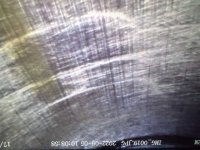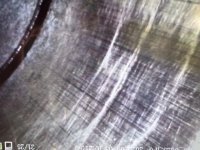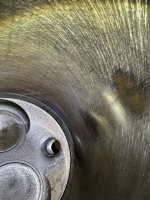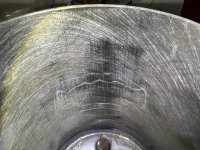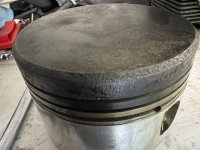I had just departed a nearby airstrip in my O-360 A1A CS RV-4, leveled off at 2500' MSL and set power to 23" x 2400 and leaned per normal.
I then executed a roll to the left followed by one to the right. My engine immediately began to run very rough! I reduced power, enriched the mixture, switched tanks, pump on, changed prop rpm, no change.
I have a P-mag on the left and a LSE Plasma II w/hall effect on the right. I pulled the circuit breakers for those one at a time, still no change. I then noticed my CHT on #2 cyl was past redline, as in 535 degrees! The other cylinder temp were normal.
By then, I was just about back in the pattern and landed. After a 30 minute cool down, I restarted the engine, performed a run-up and it ran great?!
I tied her down, installed the canopy cover and got a ride home.
I had a similar episode several weeks ago where I pulled a few G's and experienced engine roughness that lasted only a few seconds. I dismissed it as sump water ingestion.
Tomorrow I will de-cowl, visually inspect, bore scope #2 and ground run to estimate whether I can ferry it home 14 miles north for more involved diagnostics?
I have no idea how doing a positive G roll could affect the engine?
I did recently complete the Condition Inspection and switched to Autolite 386 plugs. Additionally, #2 cylinder was pulled for re-hone a re-ring 75 hrs ago. It's been running great except #2 almost always ~20 degrees higher in cruise.
I am asking the VAF brain trust for any ideas?
Thanks in advance.
I then executed a roll to the left followed by one to the right. My engine immediately began to run very rough! I reduced power, enriched the mixture, switched tanks, pump on, changed prop rpm, no change.
I have a P-mag on the left and a LSE Plasma II w/hall effect on the right. I pulled the circuit breakers for those one at a time, still no change. I then noticed my CHT on #2 cyl was past redline, as in 535 degrees! The other cylinder temp were normal.
By then, I was just about back in the pattern and landed. After a 30 minute cool down, I restarted the engine, performed a run-up and it ran great?!
I tied her down, installed the canopy cover and got a ride home.
I had a similar episode several weeks ago where I pulled a few G's and experienced engine roughness that lasted only a few seconds. I dismissed it as sump water ingestion.
Tomorrow I will de-cowl, visually inspect, bore scope #2 and ground run to estimate whether I can ferry it home 14 miles north for more involved diagnostics?
I have no idea how doing a positive G roll could affect the engine?
I did recently complete the Condition Inspection and switched to Autolite 386 plugs. Additionally, #2 cylinder was pulled for re-hone a re-ring 75 hrs ago. It's been running great except #2 almost always ~20 degrees higher in cruise.
I am asking the VAF brain trust for any ideas?
Thanks in advance.



